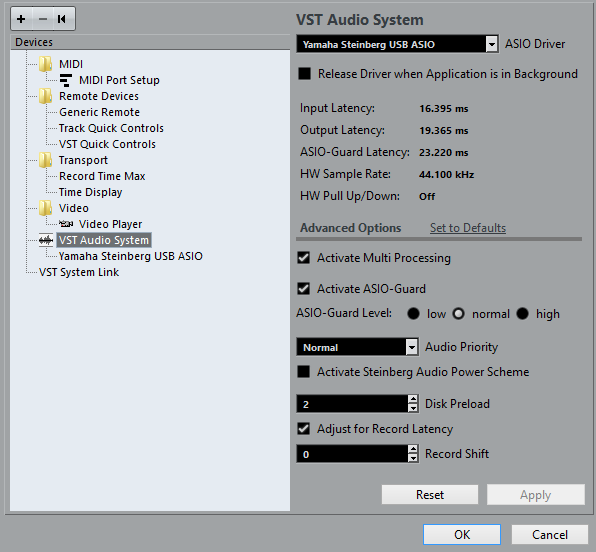

This page allows you to set up your ASIO driver. On the Audio System page you can select an ASIO driver for your audio hardware. You must select and set up your audio hardware in the Studio Setup dialog before you can use it. Normally, when you start Cubase, a dialog opens that prompts you to select a driver, but you can also select your audio hardware driver as described below. Therefore, the following sections can only serve as examples.īy selecting an audio driver, you allow Cubase to communicate with the audio hardware. Your system setup depends on many different factors, for example, on the kind of project that you want to create, on the external equipment that you want to use, or on the computer hardware that is available to you. If you only use a stereo input and output from Cubase, you can connect your audio hardware, for example, the inputs of your audio card or your audio interface, directly to the input source and the outputs to a power amplifier and speaker. You must set up your audio equipment before you can use it in Cubase. The Studio Setup dialog allows you to set up your connected audio, MIDI, and remote control devices.

To use Cubase, you must set up your audio, and if required, your MIDI system. Here you will find detailed information about all the features and functions in the program. This is the Operation Manual for Steinberg’s Cubase. Apparently there isn't one.The following list informs you about the most important improvements in Cubase and provides links to the corresponding descriptions. What I was looking for was an ASIO that would allow direct monitoring on an Audiogram 6. I will add, however, that their tech department emailed back and forth with me for some time to get rid of it, so in the future I may still be upgrading to it. For that reason if no other I say buyer beware on this product. Unfortunately once you install their demo it takes over for the manufacturer's ASIO, then when you try to uninstall it it leaves the 30 second beep and you have to delve deep into your computer to get rid of it. Asio4all wouldn't work (apparently win 7 issues) but this version of ASIO did. Now, I'm NOT a technogeek so it's possible that installing the new ASIO driver changed something not related to the ASIO and THAT was responsible for the sound quality I suppose. Especially when it's the difference in a horn tooting and a concert hall. But I've been a musician for over 35 years and I know clarity of sound when I hear it. I should have perhaps said USING the new ASIO driver the sound was light years better.


 0 kommentar(er)
0 kommentar(er)
